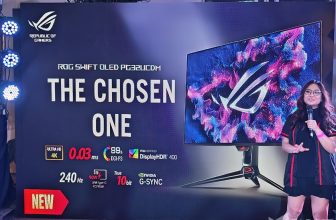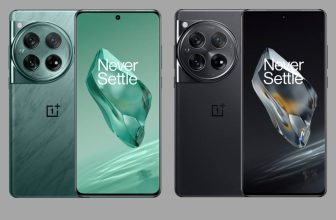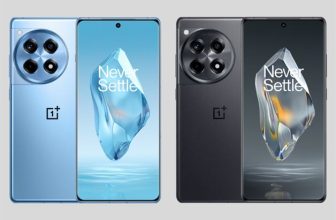Datacenter Updates
AMD brings a new era of Datacenter computing with EPYC, a high-performance server processor with high core count, superior memory bandwidth, an unmatched support for high speed I/O channels in a single chip.
Formerly named “Naples”, this new family of processors for cloud-based and traditional datacenters delivers the “Zen” x86 processing engine scaling up to 32 physical cores. The first EPYC-based servers will launch in June with extensive OEM and Channel Partner support.
Client Compute Updates
The company’s high-performance Ryzen processors are designed to bring innovation and competition back to the premium PC market by utilizing the Zen architecture to deliver advanced feature sets, better efficiency, and increased performance for the most demanding PC workloads.
Upcoming AMD processors include:
- Consumer Desktop PC Solutions:
- Ryzen Threadripper – Aimed at the High-End Desktop market and scheduled for release in the summer of 2017, it’s a CPU based on the Zen architecture that boasts up to 16 cores and 32 threads along with expanded memory and I/O bandwidth.
- Ryzen 3 Desktop Processors are scheduled to be available in the market in Q3 of 2017.
- AMD released an ecosystem update to the Ryzen 7 and Ryzen 5 processor lineup, emphasizing that Ryzen-based Windows systems from the top 5 OEMs will soon be launching in Q2 of 2017.
- Consumer Notebook PC Solutions
- Ryzen Mobile APUs (Codenamed “Raven Bridge”) utilizes a Zen-based 4-core, 8-thread CPU and high-performance “Vega” to deliver a 50% increase in CPU performance and over 40% increase in graphics performance with half the power consumption of its predecessor. Scheduled for launch in the second half of 2017, these processors are designed for premium 2-in-1s, ultraportables, and gaming form factors.
- Commercial PC Solutions
- Ryzen PRO processors are aimed at commercial, enterprise, and public sector implementation, and are designed to bring powerful multi-threaded capabilities for premium business PCs with workstation-grade performance, state-of-the-art silicon-level security, and reliable solutions with enterprise-level support and top-to-bottom manageability.
- Ryzen PRO desktop solutions are scheduled to be available in the second half of 2017, while Ryzen PRO mobile is expected to be launch on the first half of 2018.
Graphics Updates
AMD has announced the Radeon Vega Frontier Edition, its first graphics card based on the high-end Vega architecture and is a premier solution for both advanced visualization and machine learning.
Utilizing 64 compute units, it is estimated to deliver 25 TFLOPS of FP16 and an estimated 13 TFLOPS of FP32 peak performance. This means that it can handle the most demanding design, rendering, and machine intelligence workloads. The Radeon Vega Frontier Edition is expected to be available in Q2 of 2017.
What this card excels at:
- Machine Learning – Along with AMD’s ROCm open software platform, the Radeon Vega Frontier Edition allows developers to harness the power of the Vega architecture for developing machine learning algorithms. In the DeepBench benchmark, the Frontier Edition offers 30% more performance than today’s most powerful learning GPUs.
- Advanced Visualization – This card delivers up to an average of 42% increase in performance versus the Titan Xp on select professional apps. It also provides the performance necessary to drive increasingly large and complex models for real-time visualization, physically-based rendering, and VR.
- VR Workloads – The Radeon Vega Frontier Edition allows for tasks such as video editing, animation, post-production, and VR, in conjunction with support for AMD’s LiquidVR technology that offers advanced features for next-gen VR experiences.
- Revolutionized game design workflows – Radeon Vega Frontier Edition simplifies and accelerates game creation by offering a single GPU that is optimized for all stages of a game’s workflow, from asset production to playtesting and performance optimization.
For more information, you may visit radeon.com.
Technology Updates
The company has also detailed its next-generation processor, graphics, and platform technologies that will power high-performance devices.
AMD’s next-generation roadmaps include:
- The 7nm “Zen 2” and “Zen 3” architectures that combines smarter design with process technology advancements and are expected to deliver significant performance and performance-per watt improvements.
- A follow up to “Vega”, AMD plans to introduce “Navi” and its subsequent next-gen architecture, both of which are expected to built using 7nm process technology.
- Apart from adopting advanced transistor nodes, the company plans to use a combination of on-chip integration, software, and system design engineering innovations to continue creating smarter and more efficient architecture designs, which lead to improved performance and energy efficiency.
- Starting with its 2017 products, future products from AMD are planned to harness the power of breakthrough AMD Infinity Fabric Technology to create highly-scalable SoCs and platforms that will cater to the demand for high-performance compute and graphics technologies.
To know more about AMD’s products, you may visit their social media accounts on Facebook and Twitter, or their official blog.
Photo: wikimedia
Emman has been writing technical and feature articles since 2010. Prior to this, he became one of the instructors at Asia Pacific College in 2008, and eventually landed a job as Business Analyst and Technical Writer at Integrated Open Source Solutions for almost 3 years.













